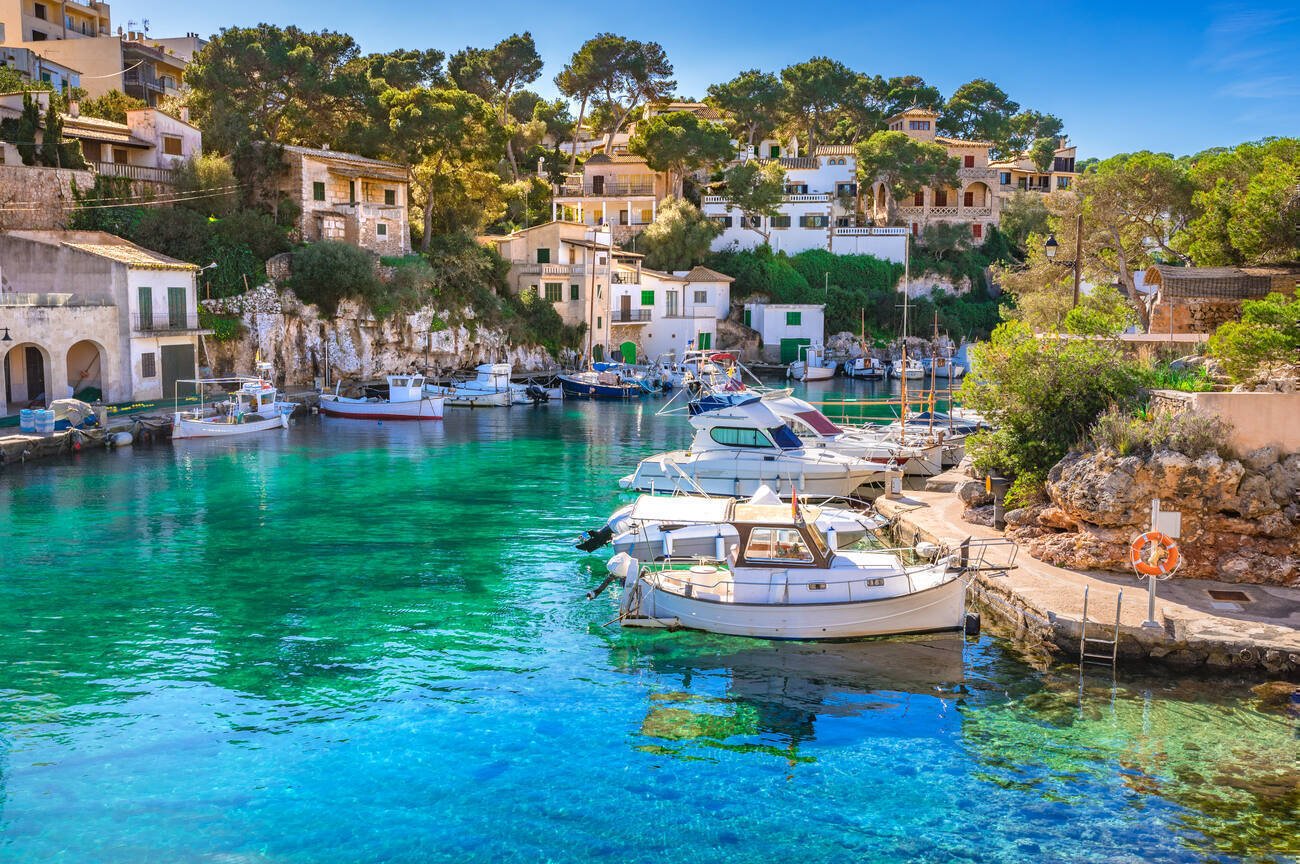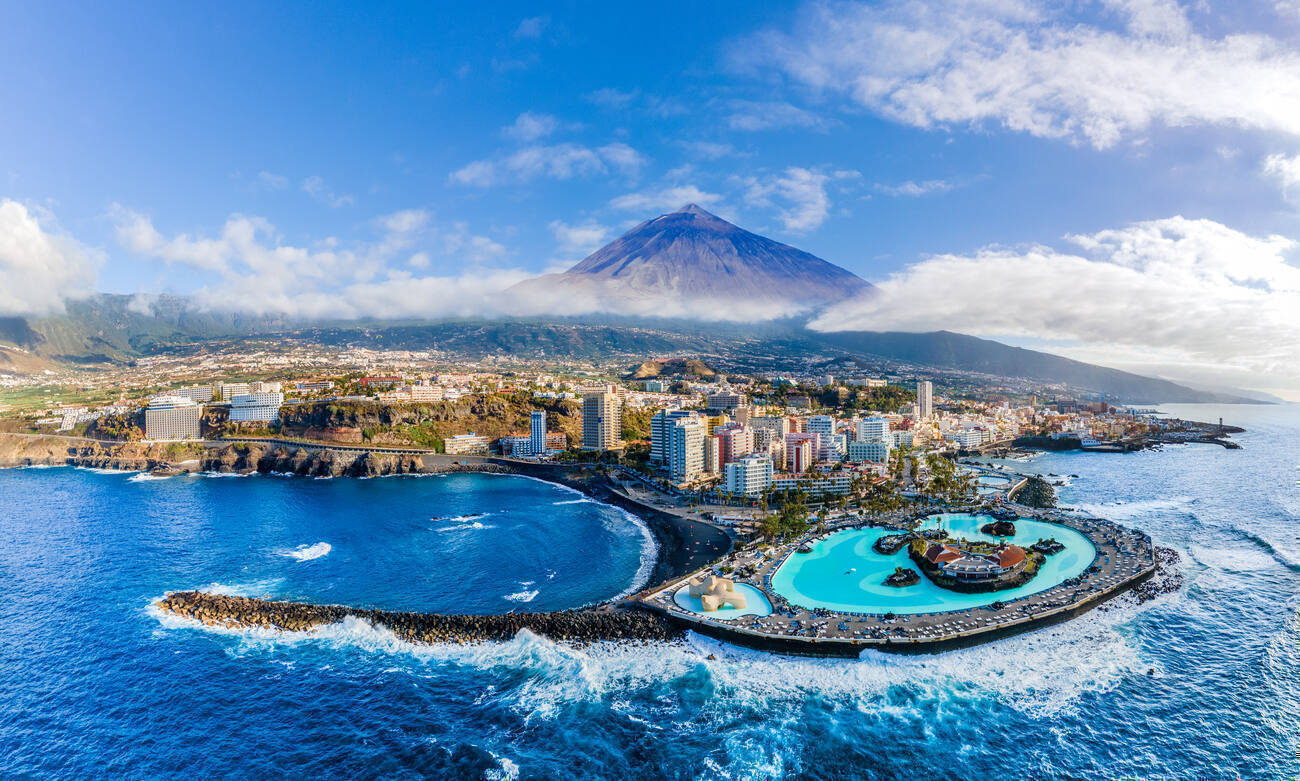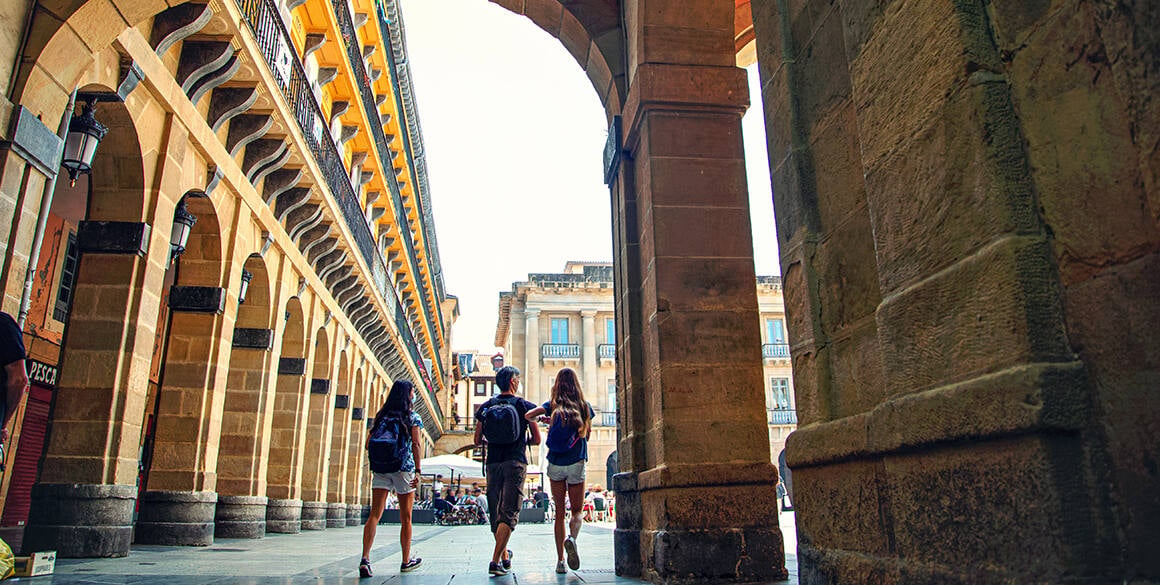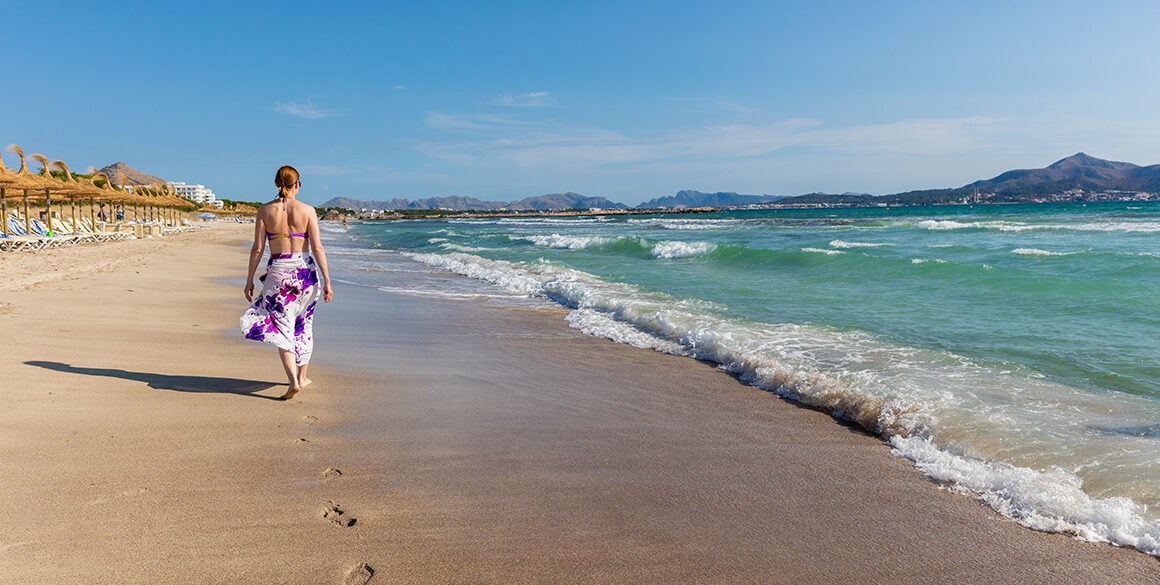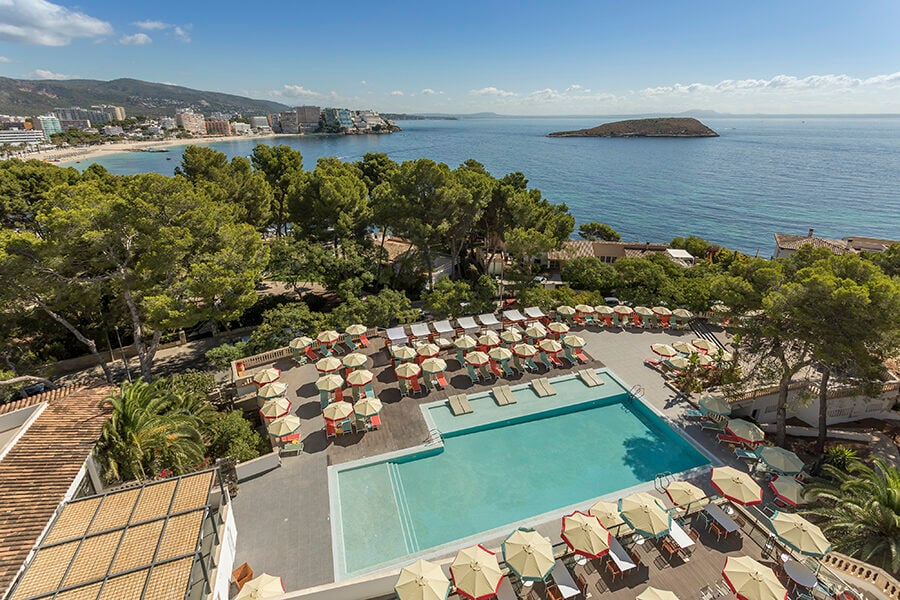When most consumers think about European vacations, their minds first go to the greats: London, Paris, Rome. They picture historic sites and cobblestone streets, museums and moody skies. They agonize over the question, “Should I go to the beach, like I really, really want to … or should I traipse around an iconic city, like I also really, really want to?”
In truth, they can have both … if they choose their destination wisely! Although some of Europe’s beaches and coastlines are legendary like the French and Italian Rivieras, there are many, many parts of the great Continent that give travelers the best of both worlds.
Welcome to the Azores edition of below-the-radar places where you can have city, sun, sand … and everything in between.
THE AZORES, PORTUGAL
The winner of the title of Europe’s Leading Adventure Tourism Destination for the past two years straight (per the World Travel Awards), the Autonomous Region of the Azores have been hot, hot, hot. But other than its high dual focuses of sustainability and eco-tourism, what do we know about this series of nine islands in the Mid-Atlantic?
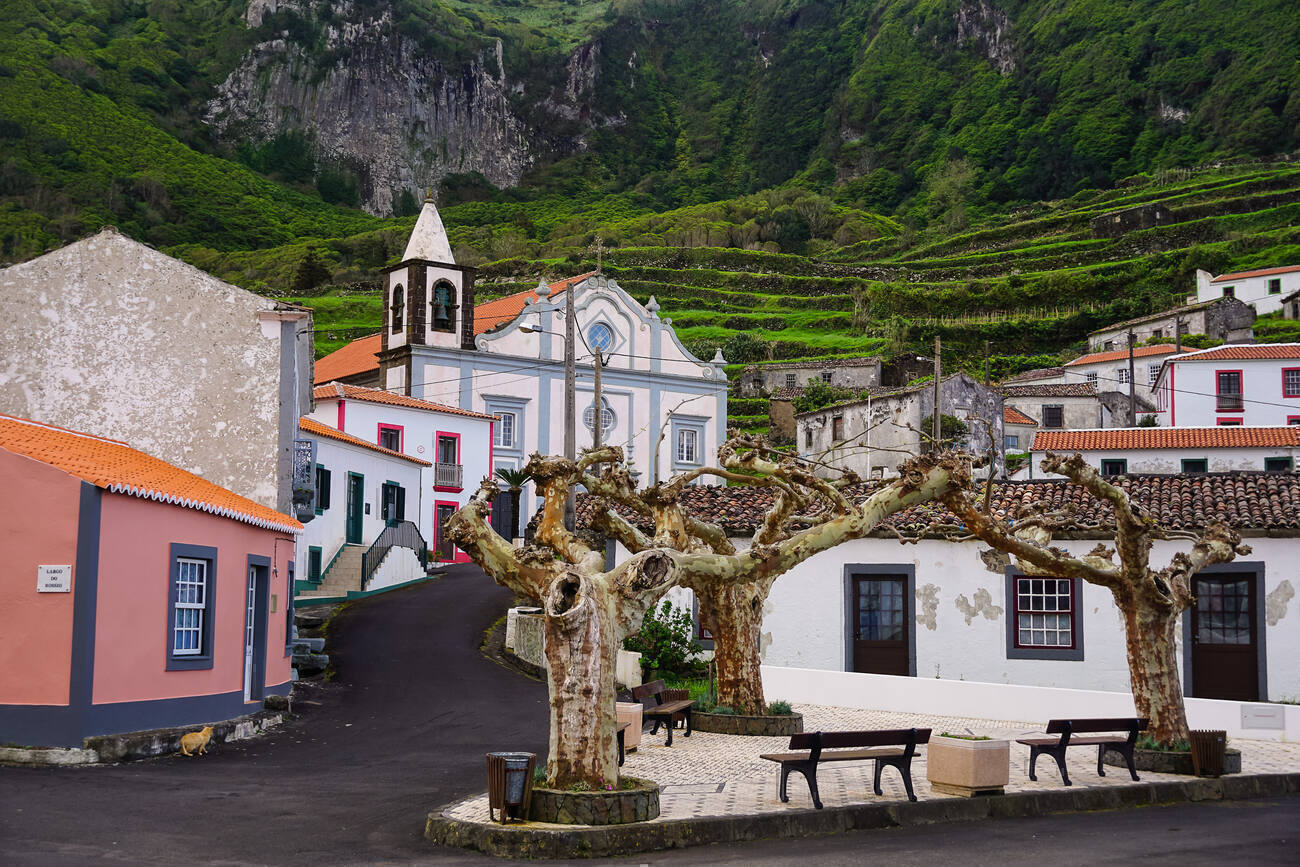
City:
The developed urban aspect—and friendliness to the U.S.—of the Azores has been well established. Back in 1795, this Portuguese archipelago was one of the first places in the world to designate a U.S. Embassy and Consulate, a site you can still visit in the largest and the “Green Island” Sao Miguel. Here, as with the other eight islands, you’ll find six centuries of blended cultures that span Flemish, French, English, and Jewish roots. In fact, a point of pride is that this city is home to the only synagogue in the Atlantic Ocean. Others include cobblestoned streets that lead to Mercado de Graca in the executive capital of the Azores, Ponta Delgada.
While most flights take you directly to Ponta Delgada, the largest city across the Azores, it’s easy to history-hop by boat or regional flights.
By that, we mean making sure you stop in Terceira, a historically natural stopping point for global travelers since they needed shelter from pirates, surrounded by a fortress for which entrance is free. Forete de Sao Sebastiao was the beginning of a new way of protecting national coasts, while newer still is the U.S. base also on this island. Even older is the city of Angra do Heroismo, the historical capital of the Azores, the judicial and two of three current capitals of the Azores, the one-time capital of Portugal, and a UNESCO World Heritage Site thanks to history and architecture that dates back to 1478.
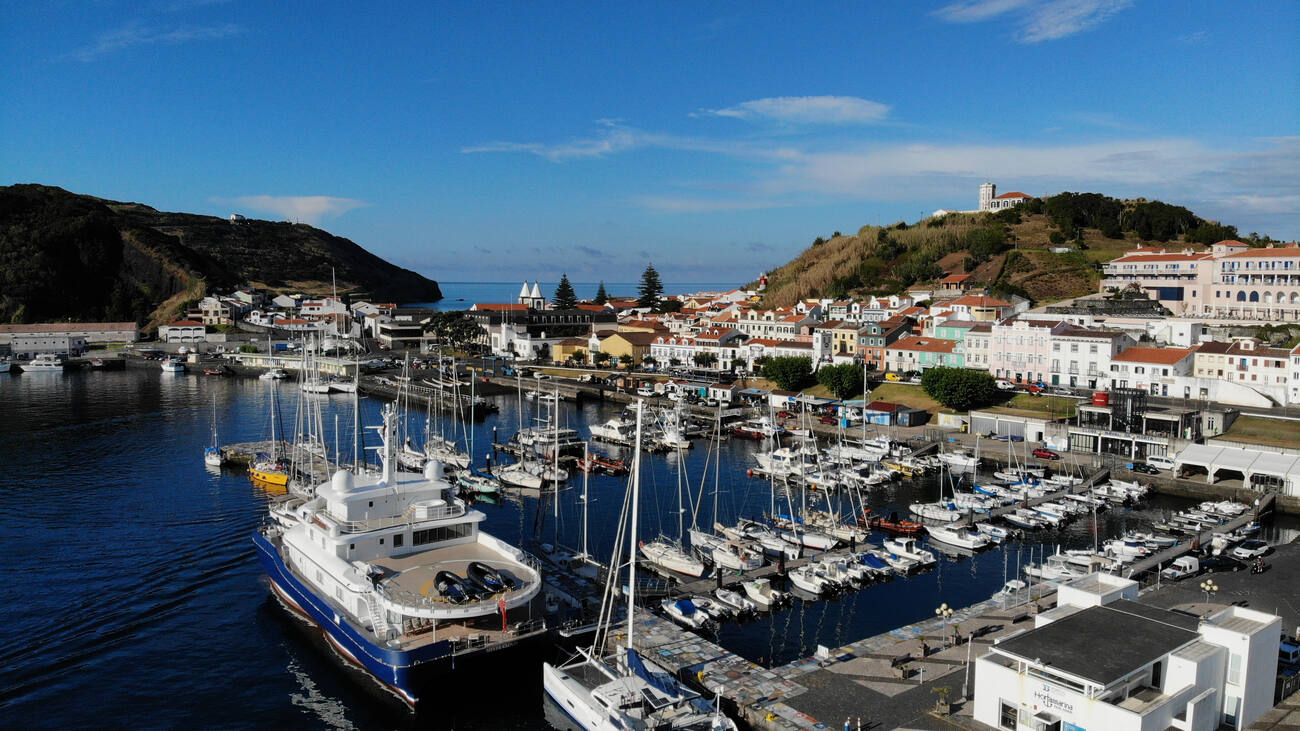
The third and last capital of the Azores is Horta, which is on the island of Faial. More than just the legislative center of the islands, this is a mariner’s paradise, where urban history is literally written on its walls. The walls and walkways there are covered by paintings by visitors—often yachters—who have noted their vessels, crews, year of arrival, and other meaningful details in eclectic paintings all along the harbor and quays to create a global curiosity that’s become one of the largest outdoor art galleries in the world. Try not to spend all your time here, though—there’s a castle, museum of arts and antiques, Scrimshaw Museum, and picturesque streets to stroll, too.
That doesn’t meant the other six islands don’t have plenty of city to see, though. On Santa Maria, look for the Chapel of Nossa Senhora dos Anjos, the oldest religious building in the archipelago. Christopher Columbus himself prayed there after surviving “a turbulent Atlantic storm that swept them ashore” here. On the southwest corner, its main town, Vila do Porto, was the first to receive a charter. Then there’s whitewashed village charm in Santo Espirito in the southeast.
But we do need to get to the “sea” portion of the Azores, so we’ll end here with a reassurance that whether you choose to add on Flores, Graciosa, Pico, Sao Jorge or Corvo to your Sao Miguel landing, you’ll find historical charm in spades.
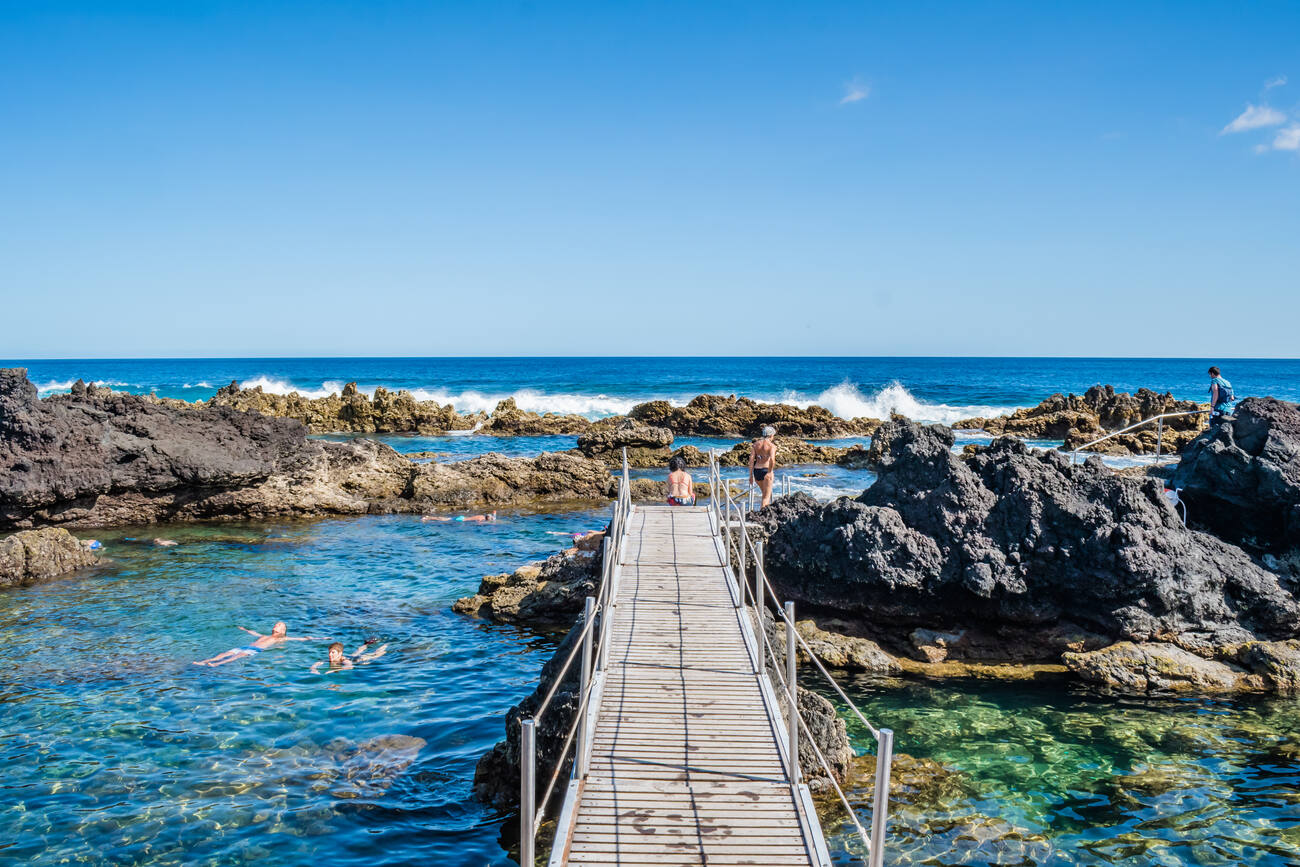
Sea:
As a collection of islands floating in waves of the Atlantic, holding steady with mild temps across seasons, there’s obviously a whole lot of ocean to enjoy. How best to do so?
Getting up close and personal with its largest denizens is a great start. This region is home to one of the world’s largest whale sanctuaries, making whale-watching here one of the most extraordinary experiences on the planet. Over 20 species can be spotted in the waters of the Azores, with specific seasons for certain types, such as blue whales in the winter and sperm whales in the summer.
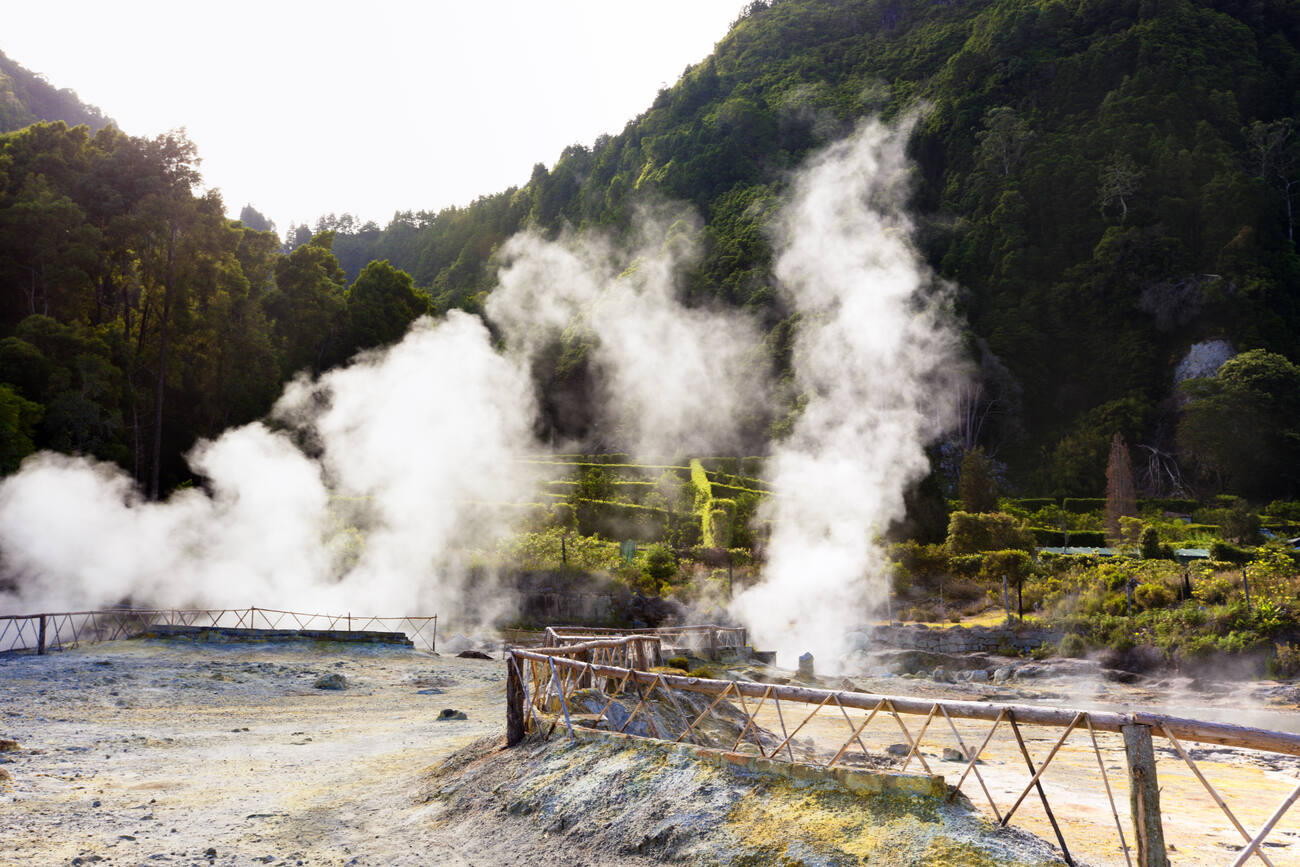
Then there are the naturally occurring hot springs—thermal pools. Furnas Village on Sao Miguel has one of the richest collections of volcanic mineral springs across the Azores. Cascading waterfalls offer hydro-massage benefits, and clay in the pool walls are ready-made mask mixes. Some of the best ones are within ear’s reach of the birdsong from Terra Nostra garden. Smaller islands also have their options, such as Graioca Island’s Termas do Carapacho in Luz. Then there are the free Piscinas Naturais do Varadouro lagoons in Faial, Aguas Quentes and Santa Cruz pools in Flores, and the Piscina Natural Simao Dias in Sao Jorge, another lagoon.
The hot springs are only a few of the natural attractions of this uniquely mosquito-free volcanic region, which also lends itself to golf, hiking, parasailing, and more, but since we’re talking about cities and seas, let’s jump right to the obvious: the beaches.
Summers range around 75 degrees Fahrenheit—perfect for sunning on the shorefronts of all nine islands. Most are on Sao Miguel, but there are 15 major beaches that should be on every visitor’s list.
Santa Barbara on Sao Miguel is recommended for water sports, and Vila Franco do Campo is great for underwater sports, as snorkeling in a semi-submerged crater from an extinct volcano offers a rare glimpse below.Those who prefer a more local feel and picturesque villages might prefer Caloura or Agua d’Alto on that same island, or the white-sand Porto Pim on Faial, whose old fishing village inspired Antonio Tabucchi, author to “The Woman of Porto Pim.”

For predictably smooth swimming, Biscoitos Beach on Terceira stays calm behind its barrier of volcanic rocks, Praia Grande on Terceira offers that thanks to its marine walls, and Ribeira Quente on Sao Miguel remains warm, unlike all of the islands’ other shores, thanks to the bay’s thermal springs. But if you want protection from wind, Sao Lourenco Bay on Santa Maria is a great choice, and the uniquely emerald green and turquoise waters are an added bonus, as is the view of Romeiro, home to a grotto that is the habitat of the Azores’ only native mammal, the Azores Noctule.
Almost as novel to the region but special to volcanic islands, black sand beaches! Almoxarife on Faial is one of the most stunning, with Mosteiros on Sao Miguel taking the lead only by its reputation as among the best in all of Europe in that category. Corvo may only have one sandy beach, but Canto da Areia also offers the drama of black sand, plus a rugged, rocky coast that’s exciting to gaze upon from the calm natural pool.
Also unique are the fajas, which are volcanic pools and marsh plains surrounded by wetlands that you have to hike to. There are over 40 in the Azores, and Faja de San Cristo in Sao Jorge is one that’s well worth the trek.
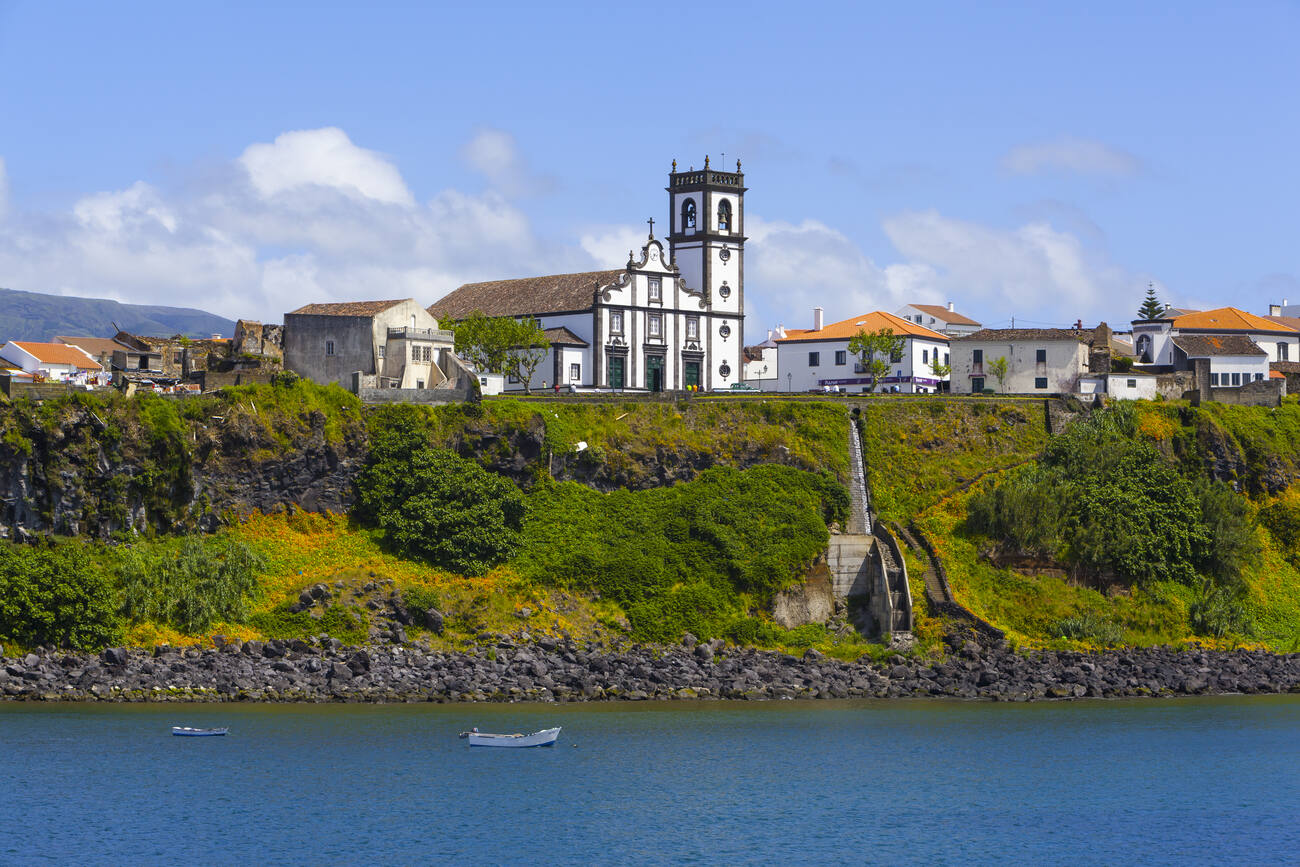
Stay:
With so many islands, how best to decide where to call your home base?
For most, it makes sense to stay where you start. Ponto Delgada is the primary hub for those flying into the Azores, and is even more attractive now that United Airlines is offering seasonal direct flights there from the U.S. In the center of town, directly on one of the main arteries in the historic heart, there’s Hotel Casa Hintze Ribeiro.
This property is a fantastic crash course in the history of Sao Miguel, as its theme is a “tribute to the region’s culture, society, and heritage,” per their own statement. Important local figures include Hintze Ribeiro, whose name adorns the street the hotel is on, as well as poets Antero de Quental and Natalia Correia.
The interiors take on the greens of Azorean pastures, the symbolic blues and whites, and traditional Azorean tiles.
Also in town is the lovely Casa do Mercado Hotel Ponta Delgada. While it’s a ten-minute walk from the city’s center, it’s close to Teatro Micaelense, the city gates, and so close to the outdoor swimming pools of Piscina do Pesqueiro—less than a quarter mile away. Its contemporary, clean design, bold jewel-toned colors are modern and homey, and the ease from which you can get to it from the main airport means you can start exploring right away.
Then there’s the lovely Hotel Ponta Delgada, one of the first hotels in all of the Azores, which was recently remodeled and also within walking distance of the city’s most iconic spots downtown. If you want to take a breather before hitting the streets, a heated indoor pool lets you do so in warmer waters than the Atlantic.
Although the Azores are known for their outdoorsy adventures, there’s plenty of city and sea to go along with it. Learn more about our Cities & Seas destinations, the Canary Islands, Spain and Mallorca in the Balearic Islands right here in our in our City & Seas mini-series focusing on Europe – now on sale.


